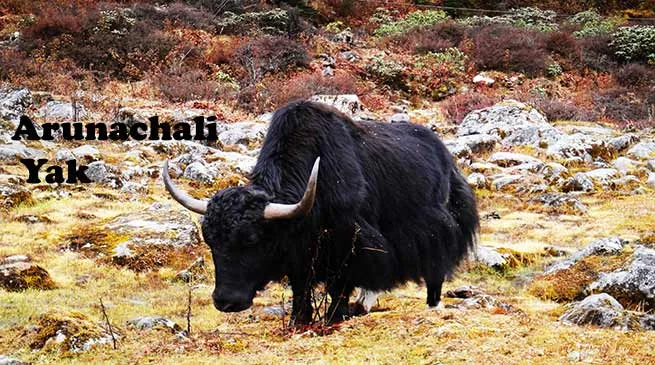
Tawang
Karnal-based National Bureau of Animal Genetics Resources has termed the Yaks found in Arunachal Pradesh as a distinct breed called Arunachali Yak, being the first instance of such a registration in the country.
Union agriculture minister Radha Mohan Singh will formally award the recognition in New Delhi on Wednesday to the representatives of National Research Centre on Yak (NRCY) based at Dirang in Arunachal Pradesh.
A study conducted on the yaks, found mainly in West Kameng and Tawang districts of Arunachal Pradesh, had established the Arunachali yak as a separate breed with distinctly different characteristics from the other yak varieties.
The study found that Arunachali yaks are characterized by their predominantly black body colour and the high fat content in their milk which sometimes goes up to 7.45%. A lactating Arunachali yak produces, on an average, 1.3 kg milk per day. Though the milk is comparatively of poor quantity, it is compensated by the high fat content which makes it useful to produce different milk products.
Das, who currently works at the National Research Centre on Pig (NRCP), said, “With this registration, there will be a universal acceptance of the Arunchali yak as a distinct breed. This will help in taking up conservation initiatives for this particular breed in a more focused manner.”
According to the livestock census of 2012, the yak population in India is estimated to be around 76,237 with an estimated number of 14,000 of them found at 3,000 to 6,000 meter above the sea level in the districts of West Kameng and Tawang.
However, scientific interventions, especially in the areas of breeding and rearing, have been able to slow down the decline of population as Arunachali yaks still remain the main source of livelihood for many Brokpas (yak rearers). West Kameng and Tawang are mainly dominated by the Monpa community, which treats the yaks as an asset for the rural economy, and rears these animals in organized farms or semi-migratory systems.













